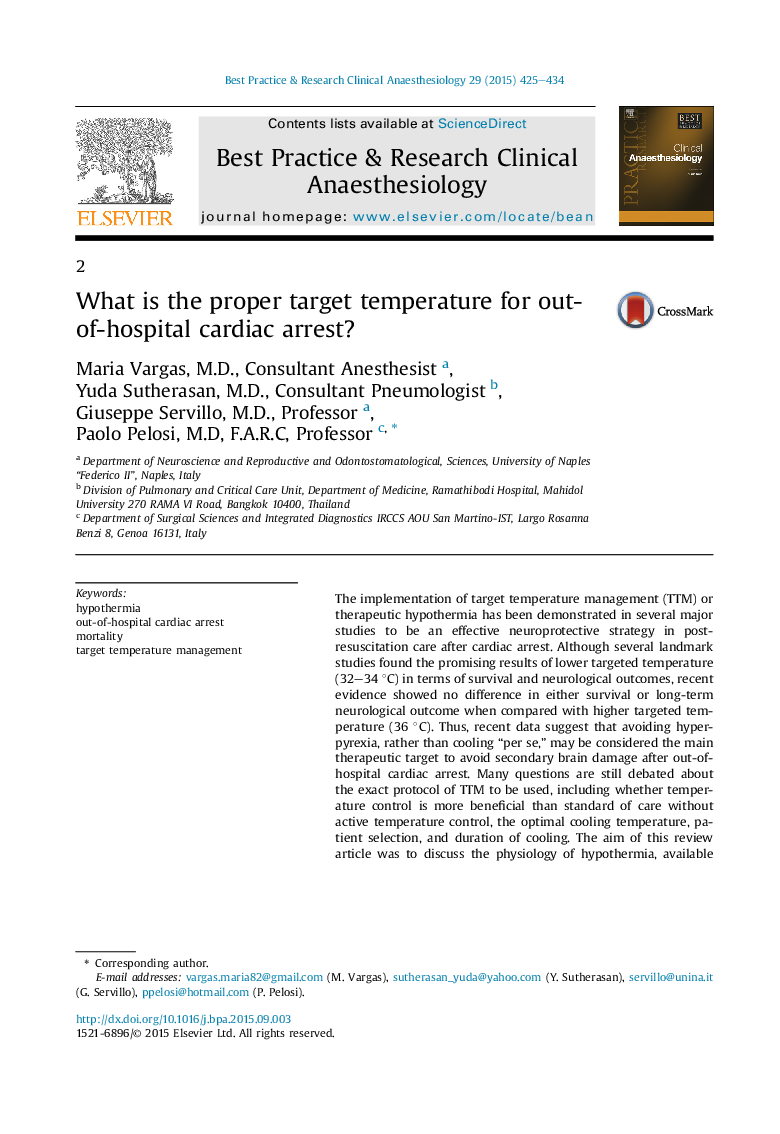| Article ID | Journal | Published Year | Pages | File Type |
|---|---|---|---|---|
| 2748341 | Best Practice & Research Clinical Anaesthesiology | 2015 | 10 Pages |
The implementation of target temperature management (TTM) or therapeutic hypothermia has been demonstrated in several major studies to be an effective neuroprotective strategy in postresuscitation care after cardiac arrest. Although several landmark studies found the promising results of lower targeted temperature (32–34 °C) in terms of survival and neurological outcomes, recent evidence showed no difference in either survival or long-term neurological outcome when compared with higher targeted temperature (36 °C). Thus, recent data suggest that avoiding hyperpyrexia, rather than cooling “per se,” may be considered the main therapeutic target to avoid secondary brain damage after out-of-hospital cardiac arrest. Many questions are still debated about the exact protocol of TTM to be used, including whether temperature control is more beneficial than standard of care without active temperature control, the optimal cooling temperature, patient selection, and duration of cooling. The aim of this review article was to discuss the physiology of hypothermia, available cooling methods, and current evidence about the optimal target temperature and timing of hypothermia.
